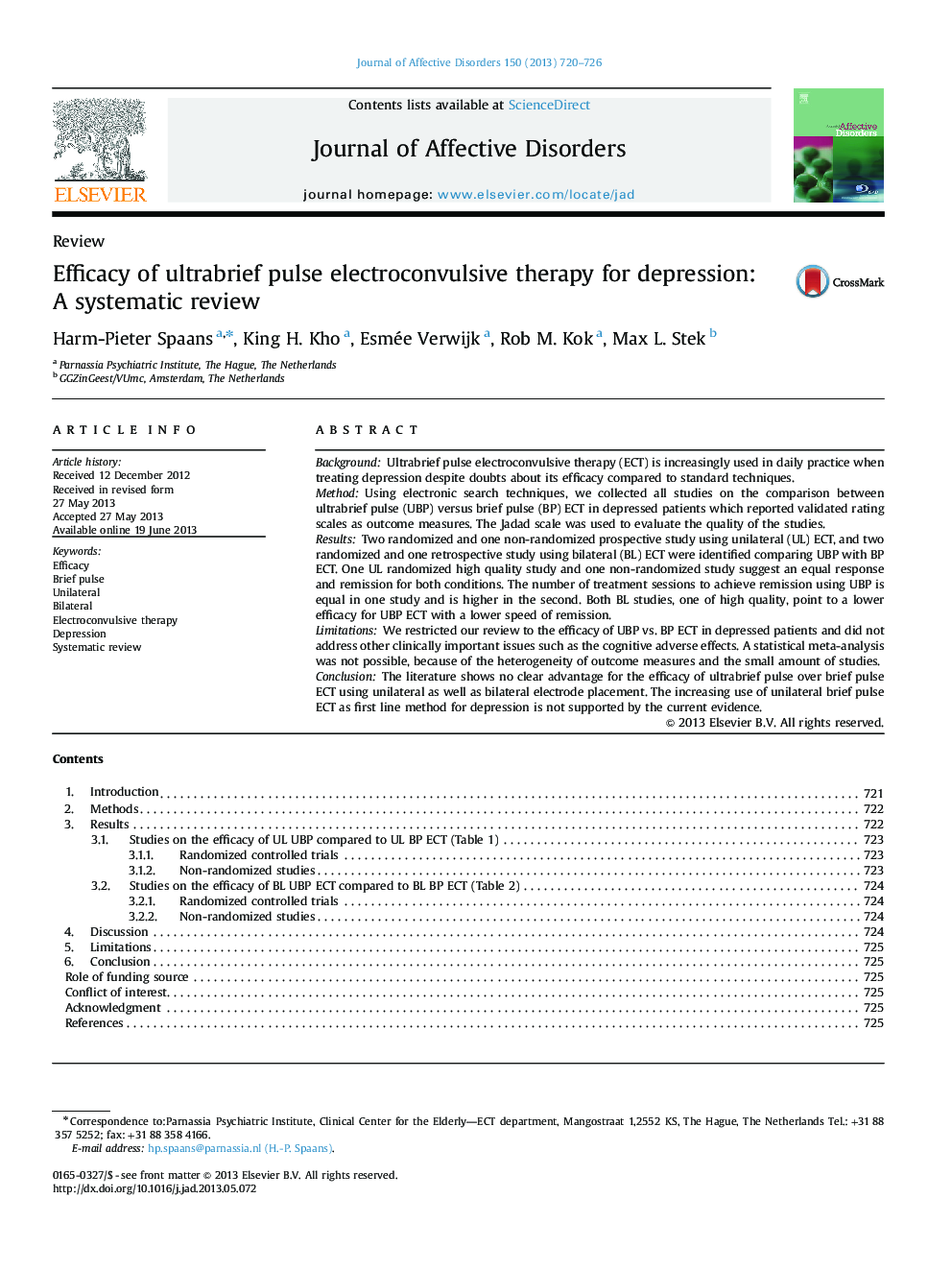| Article ID | Journal | Published Year | Pages | File Type |
|---|---|---|---|---|
| 6233557 | Journal of Affective Disorders | 2013 | 7 Pages |
BackgroundUltrabrief pulse electroconvulsive therapy (ECT) is increasingly used in daily practice when treating depression despite doubts about its efficacy compared to standard techniques.MethodUsing electronic search techniques, we collected all studies on the comparison between ultrabrief pulse (UBP) versus brief pulse (BP) ECT in depressed patients which reported validated rating scales as outcome measures. The Jadad scale was used to evaluate the quality of the studies.ResultsTwo randomized and one non-randomized prospective study using unilateral (UL) ECT, and two randomized and one retrospective study using bilateral (BL) ECT were identified comparing UBP with BP ECT. One UL randomized high quality study and one non-randomized study suggest an equal response and remission for both conditions. The number of treatment sessions to achieve remission using UBP is equal in one study and is higher in the second. Both BL studies, one of high quality, point to a lower efficacy for UBP ECT with a lower speed of remission.LimitationsWe restricted our review to the efficacy of UBP vs. BP ECT in depressed patients and did not address other clinically important issues such as the cognitive adverse effects. A statistical meta-analysis was not possible, because of the heterogeneity of outcome measures and the small amount of studies.ConclusionThe literature shows no clear advantage for the efficacy of ultrabrief pulse over brief pulse ECT using unilateral as well as bilateral electrode placement. The increasing use of unilateral brief pulse ECT as first line method for depression is not supported by the current evidence.
